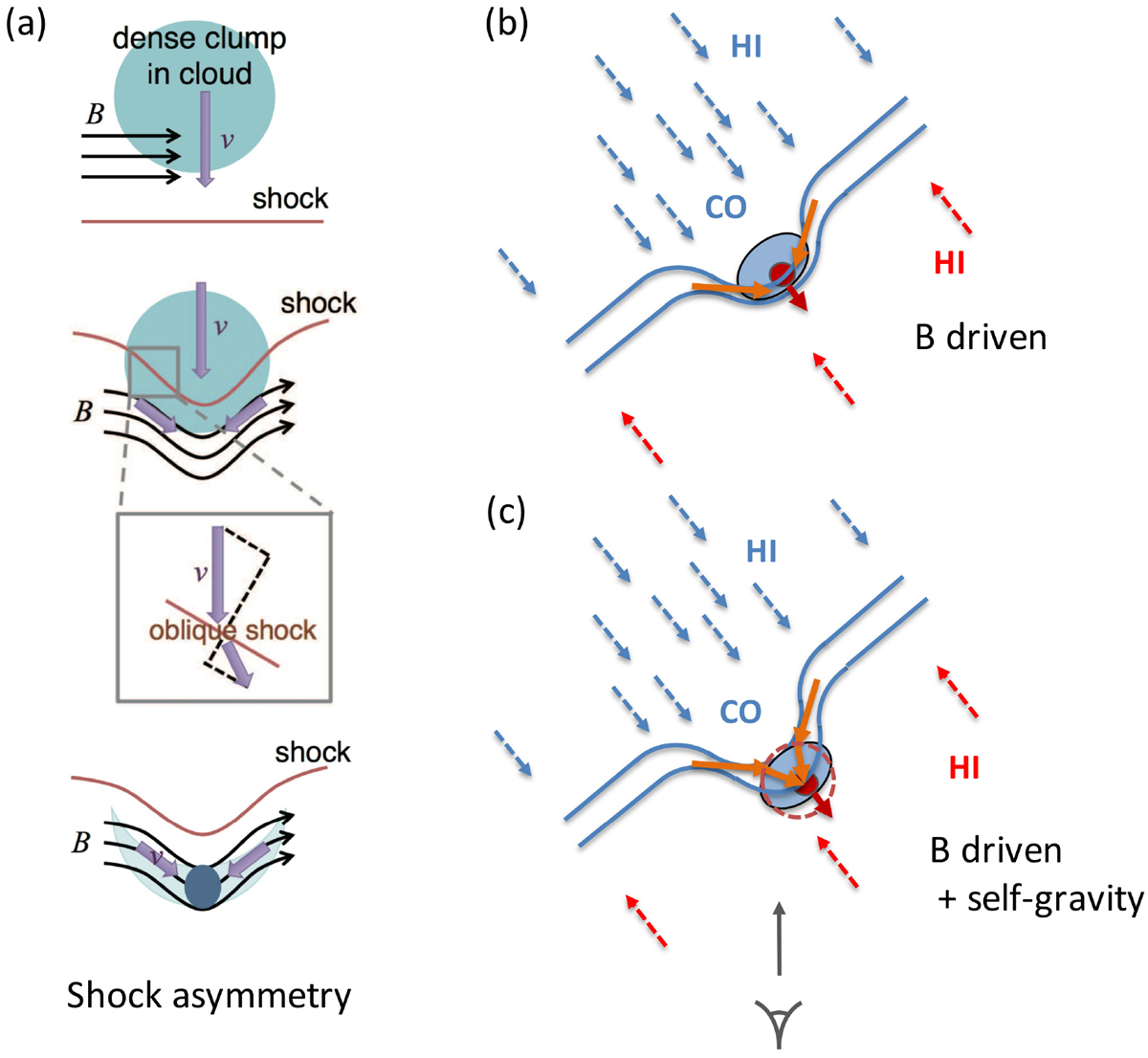Fig. 22

Proposed sketch, observed from above the Musca filament, to explain the spatial and kinematic asymmetries of Musca originating from a H I cloud–cloud collision event (blue and red dashed arrows) following the Inoue scenario (see panel a, Inoue et al. 2018). The asymmetry between CO and H I could be due to the effect of compression of a clump in a cloud–cloud collision. The resulting bent of the magnetic field (blue lines) drives the gas towards the apex along the magnetic field, leading to a concentration of the mostly blue-shifted but slowed down (i.e. becoming red-shifted compared to the localmostly blue-shifted H I gas) CO gas (B driven concentration, panel b). Later on, the self-gravity of the strong concentration of matter (filament crest) can curve the concentration flows (see panel c) continuing the accretion onto the crest while magnetic field slowly drifts through the crest. The crest would then be in equilibrium between an asymmetric accretion and the tension of magnetic field. The progressive slowing down of the accretion flow, observed in the strands, from the bluest gas to the crest velocity could be partly due to magnetic pressure (the flows get less aligned with the magnetic field as self-gravity starts to take over) and perhaps some contribution from the turbulent pressure as it gets closeto the crest (see Sect. 6.6). Seen from the side, the magnetic field would naturally appear perpendicular to the crest of the filament as observed.
Current usage metrics show cumulative count of Article Views (full-text article views including HTML views, PDF and ePub downloads, according to the available data) and Abstracts Views on Vision4Press platform.
Data correspond to usage on the plateform after 2015. The current usage metrics is available 48-96 hours after online publication and is updated daily on week days.
Initial download of the metrics may take a while.


